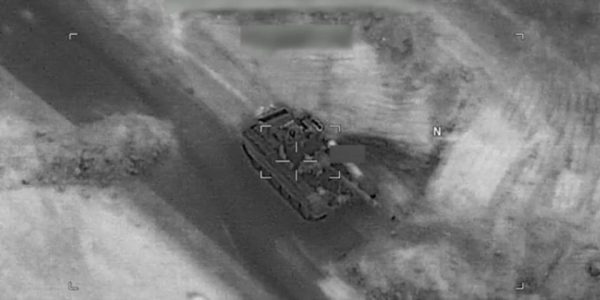

The Department of Defense has remained relatively tight-lipped on the February 7 firefight that saw U.S. military personnel deliver a kinetic spanking to hundreds of Russian mercenaries and Syrian pro-regime fighters in eastern Syria.
But a new report from the New York Times provides a riveting tick-tock filled with new details about how the four-hour battle played out, based on Pentagon “interviews and documents” that, taken together, comprise “the Pentagon’s first public on-the-ground accounting of one of the single bloodiest battles the American military has faced in Syria” since the start of the anti-ISIS campaign there in 2014, as the article put it.
Here are the juiciest bits.
- The American forces: The U.S. military contingent consisted of 30 soldiers culled from the 1st Special Forces Operational Detachment-Delta and 75th Ranger Regiment deployed under Joint Special Operations Command in an advise-and-assist role to help out Kurdish forces near a crucial Conoco gas plant. According to the New York Times, that team was supported by a platoon of infantry Marines and Army Special Forces personnel feeding surveillance and reconnaissance information to the soldiers 20 miles away at the Conoco outpost.
- The calm before the storm: Over the course of the day on February 7, that contingent of 30 Delta Force and Ranger soldiers was gradually encircled by more than 500 pro-regime fighters and 27 vehicles ranging from a trio of Russian-made T-72 main battle tanks to armored personnel. Observing the build-up through the ever-ubiquitous drones in the skies overhead, the Marines and Green Berets at the support site began putting together a quick-reaction force with a handful of MRAPs should the tensions at the Conoco outpost escalate.
- Sh*t hits the fan: Around 10 PM on February 7th, the joint Russian and Syrian force began bombarding the Conoco outpost with artillery and mortar rounds as the U.S. service members returned fire with Javelin anti-tank missiles. “The air was filled with dust and shrapnel,” the New York Times reports. “For the first 15 minutes, American military officials called their Russian counterparts and urged them to stop the attack. When that failed, American troops fired warning shots at a group of vehicles and a howitzer.”
- Air support arrives … : Those Marine and Green Berets weren’t the only ones watching: military officials at the Combined Air Operations Center at Al Udeid Air Base in Qatar had observed the build-up as well and quickly deployed air support after the fighting started. “American warplanes arrived in waves, including Reaper drones, F-22 stealth fighter jets, F-15E Strike Fighters, B-52 bombers, AC-130 gunships and AH-64 Apache helicopters,” the New York Times reports. “For the next three hours, American officials said, scores of strikes pummeled enemy troops, tanks and other vehicles. Marine rocket artillery was fired from the ground.”
- … but the quick reaction force wasn’t that quick: It took nearly three-and-a-half hours for the joint QRF of Green Berets and Marines to travel those 20 miles to assist their fellow service members The New York Times reports that drivers, relying solely on night vision equipment to avoid giving away their position with headlights, had to contend with roads “littered with felled power lines and shell craters.” Nearly halfway through the trip, the convoy had to stop: “the barrage of artillery was too dangerous to drive through until airstrikes silenced the enemy’s howitzers and tanks.”
- The final push: The QRF finally arrived at the Conoco outpost around 1:30 AM as the Russian mercenaries ditched their burned-out vehicles and marched on the combined U.S. force on foot. What happened next, according to the Times, was a remarkable stand:
A handful of Marines ran ammunition to machine guns and Javelin missile launchers scattered along the berms and wedged among the trucks. Some of the Green Berets and Marines took aim from exposed hatches. Others remained in their trucks, using a combination of thermal screens and joysticks to control and fire the heavy machine guns affixed on their roofs.
A few of the commandos, including Air Force combat controllers, worked the radios to direct the next fleet of bombers flying toward the battlefield. At least one Marine exposed himself to incoming fire as he used a missile guidance computer to find targets’ locations and pass them on to the commandos calling in the airstrikes.
It’s worth noting that this is the first mention of Air Force combat controllers in the entire piece. This means that while the Russia force consisted mostly of mercenaries hired by Vladimir Putin’s preferred private military contractor The Wagner Group, virtually every branch of the armed forces (minus the Navy and Coast Guard) was present and primed during this firefight.
The mercenaries gave up and retreated around 2:30 AM after four hours of fighting. Zero American troops were harmed, and somewhere around 300 Syrian and Russia forces were killed. The rest, as they say, is history:
